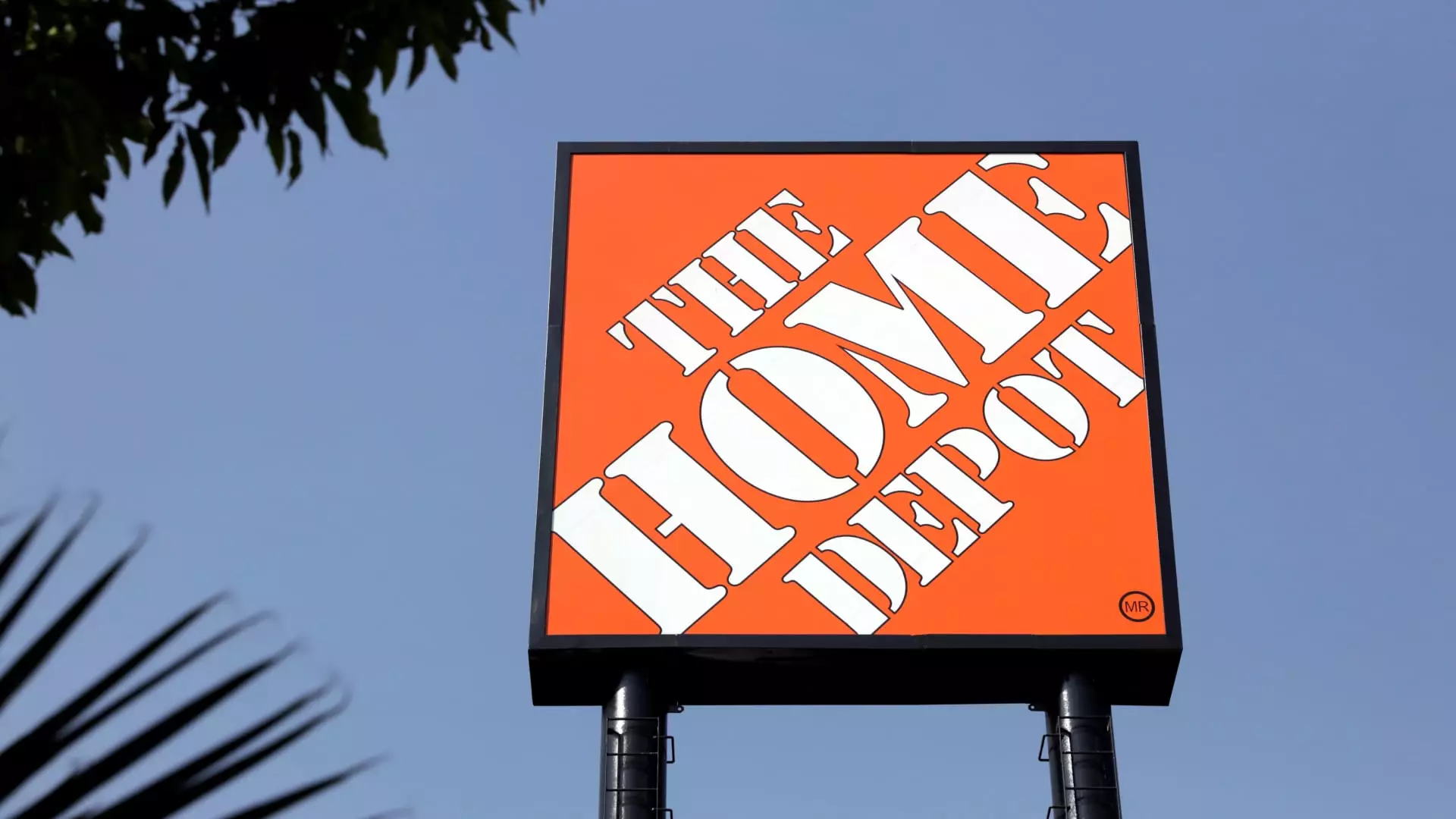Home Depot, one of the largest home improvement retailers in the United States, recently reported a significant increase in sales for the latest quarter, with a year-over-year growth exceeding 6%. This surge in revenue was influenced by several factors, including the integration of a newly acquired business, heightened demand due to weather-related repair needs, and increased consumer enthusiasm for home improvement projects. However, beneath these promising statistics lies a complex landscape shaped by consumer hesitance, economic uncertainty, and shifts in the housing market.
The reported sales growth can be partially attributed to Home Depot’s acquisition of SRS Distribution, a major supplier in the roofing and landscaping sectors. This $18.25 billion deal marked the largest acquisition in the retailer’s history. The inclusion of SRS in Home Depot’s portfolio not only broadened its market reach but also contributed an estimated $6.4 billion in revenue during the reporting period. As a result of these developments, the company’s full-year sales outlook has adjusted upward, now projecting a rise of approximately 4%. Initially, predictions suggested a modest increase of between 2.5% and 3.5%.
Additionally, favorable weather played a crucial role in the company’s growth during the quarter. Warmer and drier conditions allowed for extended outdoor activity, which spurred purchases of outdoor items and home improvement materials. The impact of the weather was particularly pronounced following hurricanes Helene and Milton, where consumer demand for emergency supplies—such as generators and plywood—boosted sales performance by approximately half a percentage point.
Despite these favorable factors, Home Depot faces a dual challenge: while demand for home improvement projects exists, consumers remain cautious about spending. Chief Financial Officer Richard McPhail highlighted that many customers are deferring their projects, waiting for more favorable mortgage rates and economic conditions before committing to larger expenditures. While nearly 90% of Home Depot’s DIY clientele are homeowners in reasonable financial standing, there remains a hesitance to initiate spending on non-essential renovations.
The current economic climate, characterized by higher interest rates and inflation, has influenced consumer behavior profoundly. Many homeowners are feeling the pressure to maintain their financial stability amidst soaring costs, which has resulted in a reluctance to invest in discretionary home improvement projects. This does not negate the existence of pent-up demand; rather, it underscores a critical waiting period wherein consumers are eager to act but genuinely concerned about potential financial repercussions.
Evaluating Home Depot’s performance metrics reveals both strengths and weaknesses. The company reported earnings per share of $3.67, slightly surpassing analysts’ expectations, alongside a revenue increase to $40.22 billion. However, comparable sales for the quarter fell by 1.3%, signaling the company’s eighth consecutive quarter of declining comparable sales. Although this decline showed improvement compared to analysts’ predictions of a more significant drop, it still raises concerns regarding ongoing consumer behavior patterns and overall market conditions.
Despite these mixed signals, Home Depot’s stock has maintained a robust presence, climbing roughly 18% this year. This growth has been accelerated by proactive measures taken by the company to capture business in the professional contractor segment, essential for sustaining its sales momentum in increasingly tight market conditions.
Looking towards the future, Home Depot’s management expressed uncertainty regarding when consumers might resume normal spending patterns. Factors such as fluctuating mortgage rates and the broader economic environment will inevitably play critical roles in determining when the consumer market will “unfreeze.” Moreover, the potential for increased costs due to tariffs on imported goods, particularly in the decoration and consumer goods sectors, is an unpredictable variable that could influence pricing strategies.
Despite the hurdles ahead, the holiday season presents a lucrative opportunity for Home Depot, as the retailer continues to expand its unique product offerings for seasonal home decor. From distinctive Christmas decorations to oversized Halloween items that went viral, the company’s innovative approach has successfully captured consumer attention.
Home Depot’s quarterly report illustrates the company’s resilience in a challenging economic landscape. While sales growth resulting from strategic acquisitions and favorable weather conditions is promising, ongoing consumer hesitance poses a unique challenge. The coming months will be critical as Home Depot navigates these uncertain waters in search of sustainable growth.

